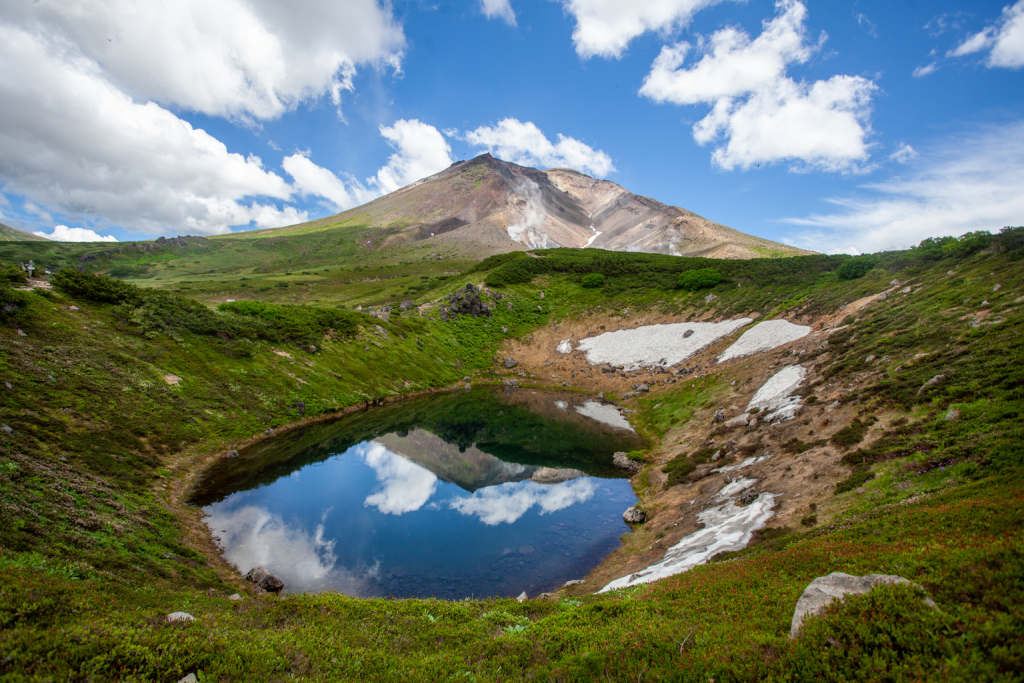As an avid solo hiker, I am always on the lookout for destinations in Japan that combine wild and majestic landscapes with easy access and safety. Although wild landscapes and easy access may otherwise sound almost like an oxymoron, Daisetsuzan National Park begs to differ. On my recent solo hiking trip there, I found myself right next to an active volcano within 4 hours after my plane left Tokyo.
How to Get There & Where to Stay
Daisetsuzan National Park is the largest national park in Japan. More specifically, it’s located in Hokkaido — the country’s last frontier. Despite its remoteness, a large section of the park, between two onsen towns of Asahidake Onsen and Sounkyo Onsen, can be easily accessed from Tokyo with a combination of plane and bus travel. The most convenient airport to reach the park is Asahikawa Airport. From there you can take a direct bus to Asahidake Onsen or Sounkyo Onsen (via Asahikawa City).
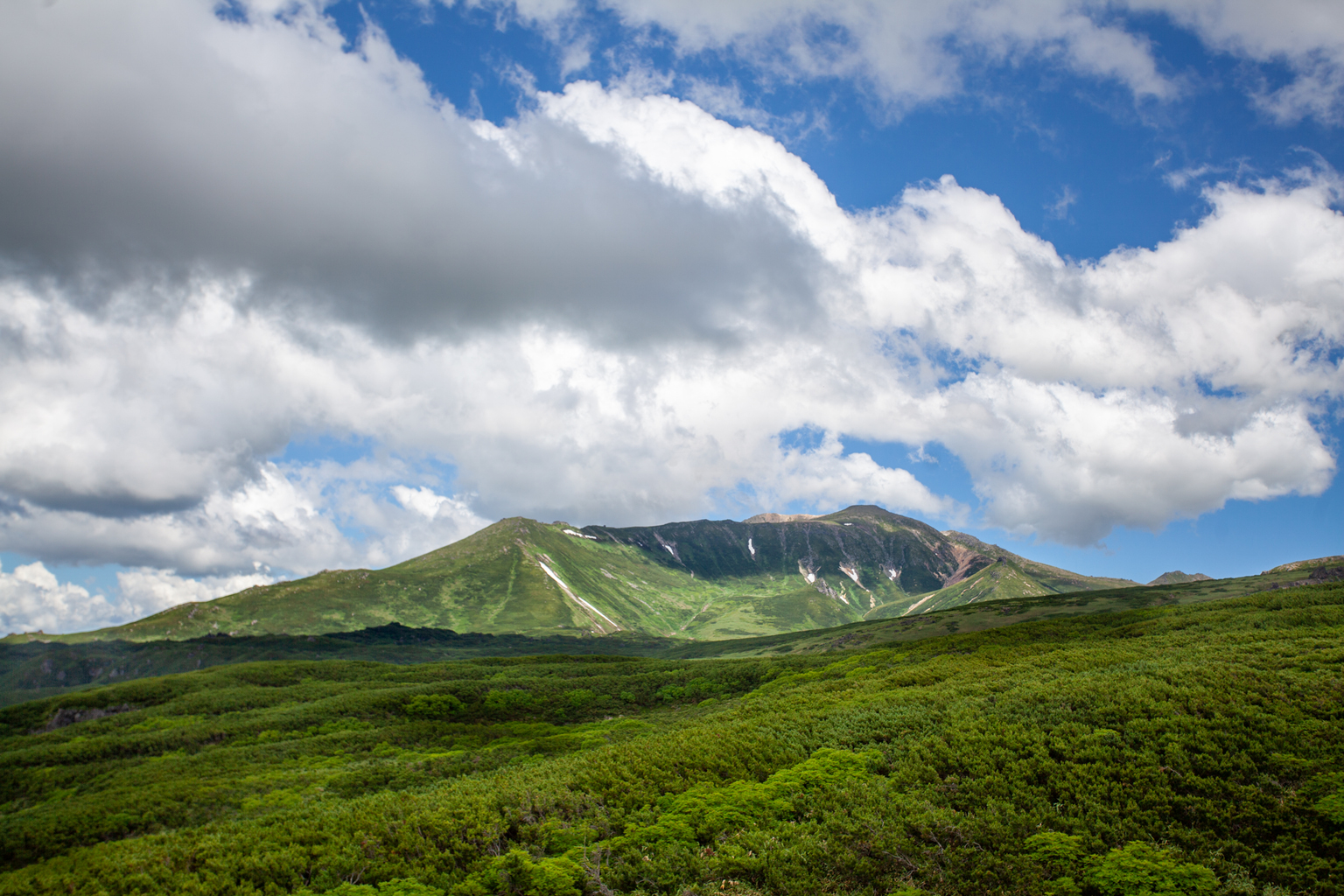
I planned my trip by dividing my time between Asahidake Onsen in the east part of the park and Sounkyo Onsen in the west. There are relatively pricey but convenient ropeways connecting each onsen town to Daisetsuzan’s main two trailheads. Asahidake Ropeway (¥3,200 round trip) and Sounkyo-Kurodake Ropeway (¥2,400 round trip) make an early start possible. So, I started hiking at 7am.
Both towns are home to a good range of accommodation facilities. This includes camping grounds, hostels (with an outdoor onsen) and onsen hotels. Both the transportation services and accommodation facilities have rigid pandemic-related protocols in place and visitors are expected to always keep social distance and wear masks.
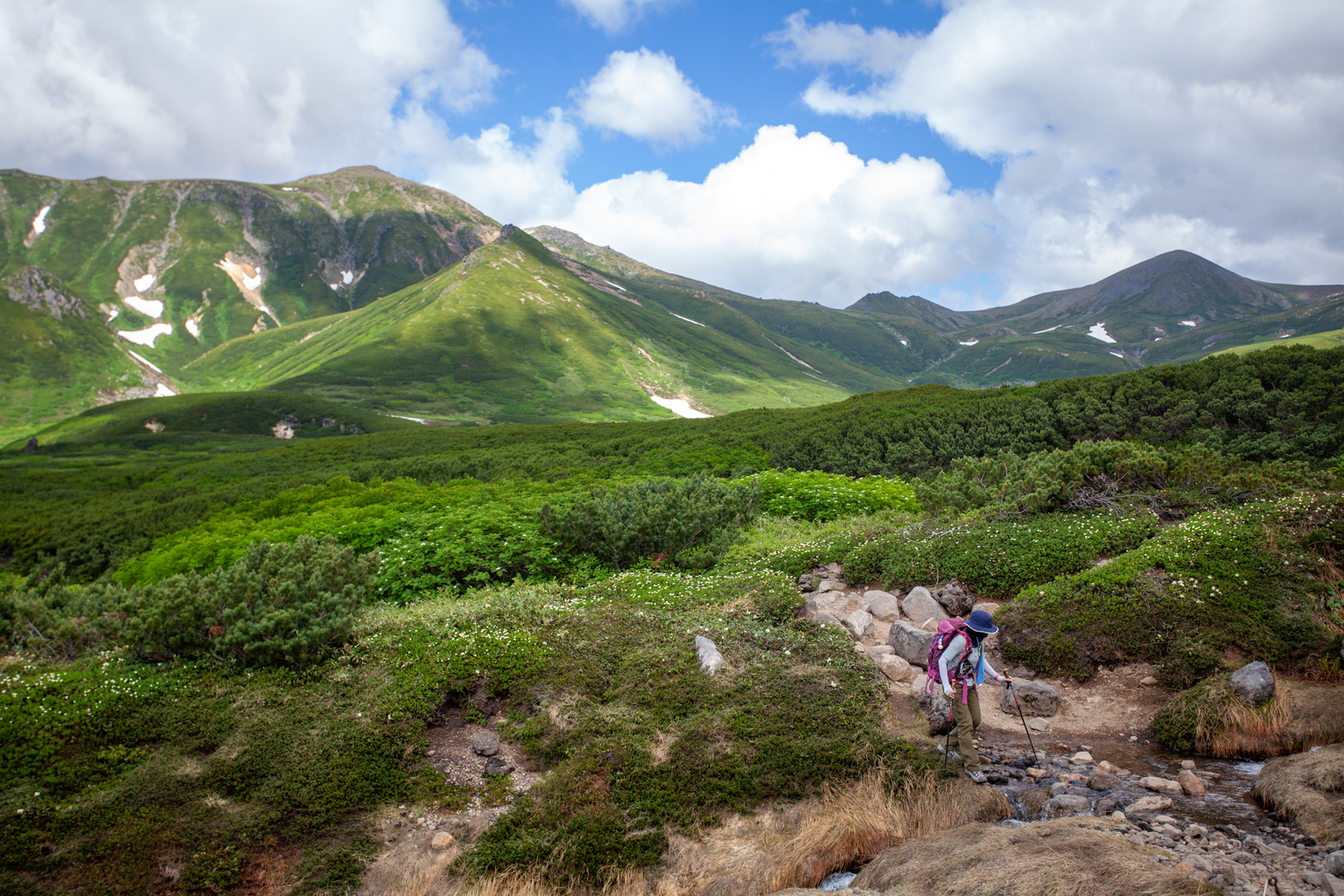
Although Daisetsuzan is more famous for its Grand Traverse route requiring five to seven days on the trail, the park also offers numerous easy to intermediary level hiking trails. You can base yourself in one of the onsen towns and do many different day hikes. Each one offers equally mesmerizing but different landscapes. They all impressed me in different ways. Some trails offered Swiss-like picture-perfect scenery whereas others took me next to otherworldly looking and poisonous calderas. So, here are my recommendations for easy day hikes in Daisetsuzan National Park.
1. Sugatami Pond Loop Hike
This is visually a very rewarding and easy hike that will require very limited physical effort. The trail starts as soon as you step foot outside the Sugatami Ropeway Station. This is a good place to do some last-minute snack and drinks shopping or take a coffee break. The main landmarks along the trail – in addition to Asahidake that you will be facing the entire time – are Sugatami Pond and Meteo Pond. The hike takes around two hours including the photo stops.
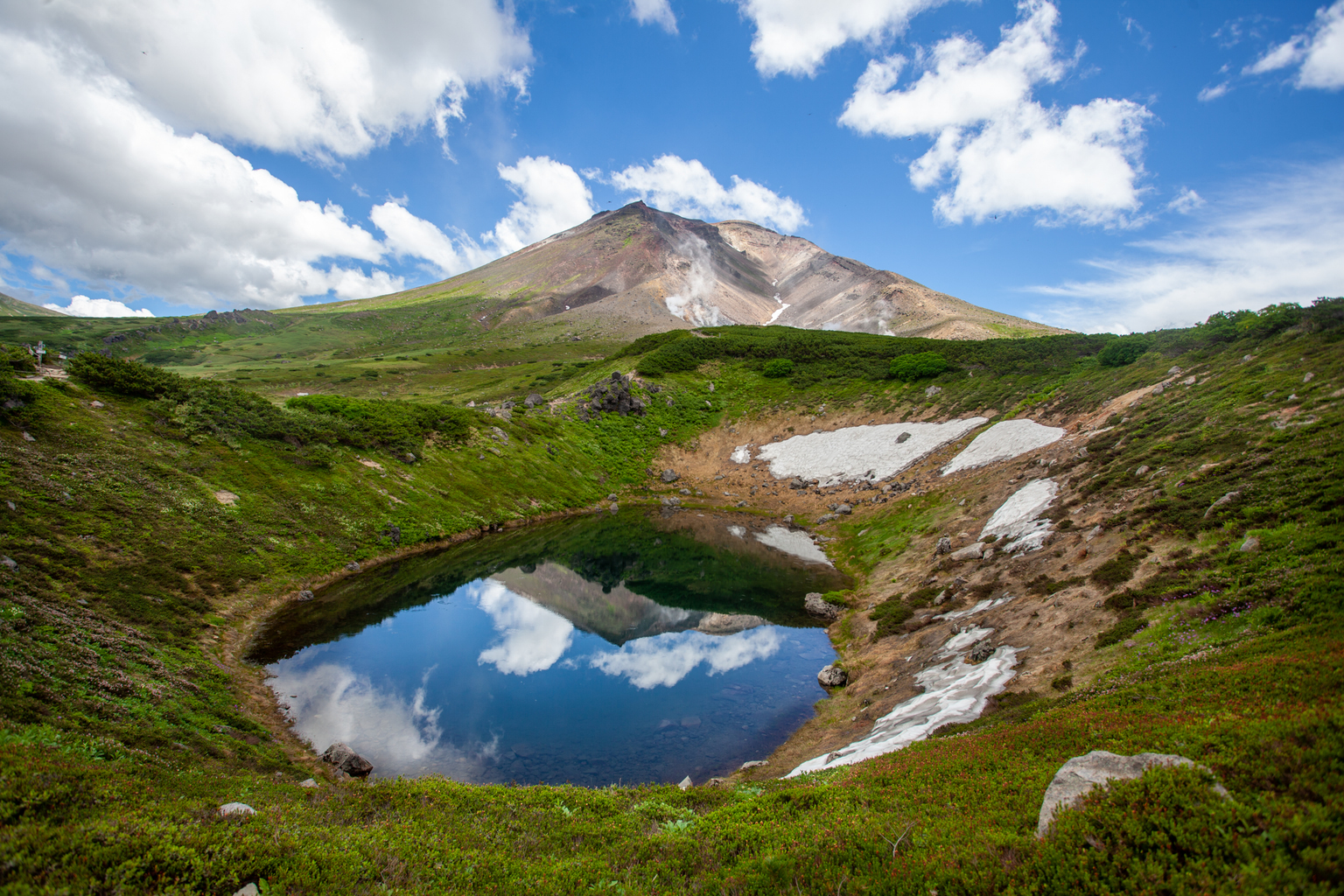
Sugatami Pond
If you follow the trail signs to the right, you will reach the picturesque Sugatami Pond. Here, you will be rewarded with the reflection of Asahidake. An active volcano and one of the famous 100 mountains of Japan, Asahidake is also the tallest mountain (2,291 meters) in Hokkaido. Although Asahidake last erupted in 1739, the vivid fumaroles will remind you where you are. As will the growling sounds coming out of the mountain. There are numerous viewpoints along the trail which will merely require you to climb a few steps.
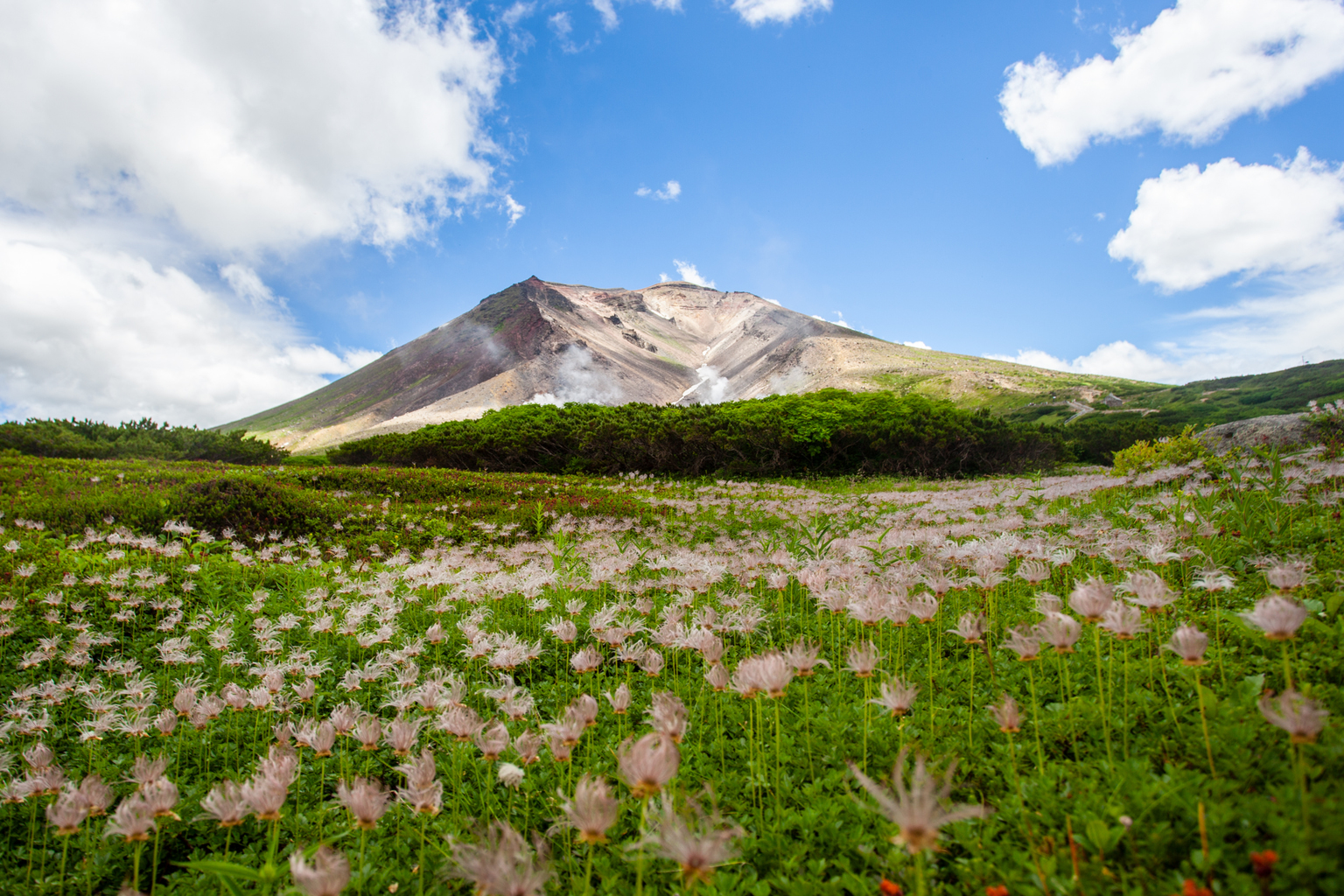
Asahidake
Although Sugatami Pond is more famous, Meteo Pond located on the left side of the trail, is also stunning. In contrast to the rugged volcanic scenery around Sugatami Pond, Meteo Pond will make you feel like you’re in Heidiland. In summer, there’s the surrounding greenery and the alpine flowers that bloom every July. As early as September, the landscape is bursting with autumn colors.
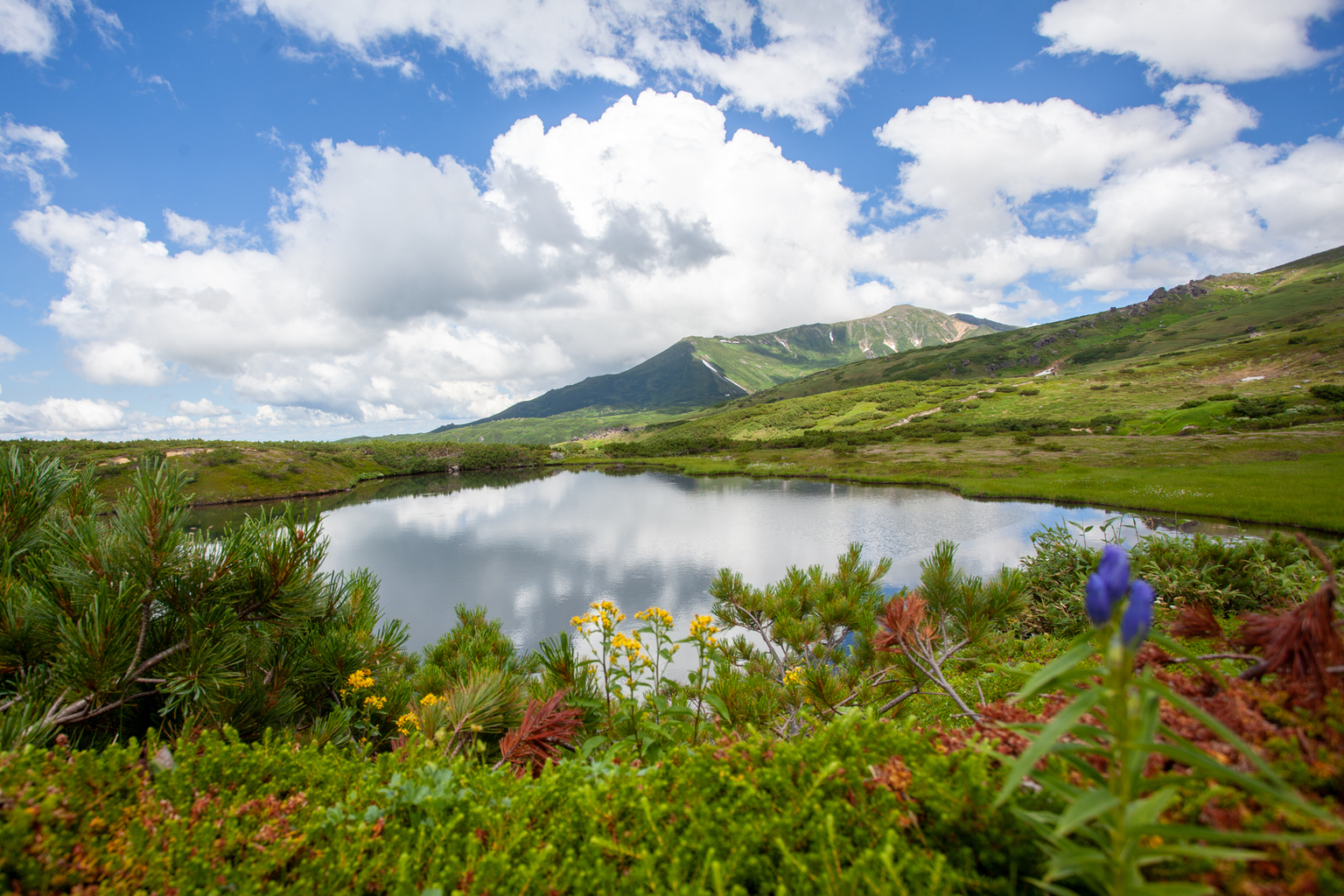
Meteo Pond
2. Asahi Nakadake Onsen Hike
In case you are looking for a slightly more challenging, longer but rewarding hike, Nakadake Onsen hike is a great choice. It will take you through some of the most iconic sceneries of Daisetsuzan National Park.
There are two ways to reach Nakadake Onsen from Sugatami Ropeway Station. The first one involves a more challenging hike with an initial two-hour steep climb to Asahidake. The Asahidake-Nakadake Onsen loop hike takes around seven to eight hours.
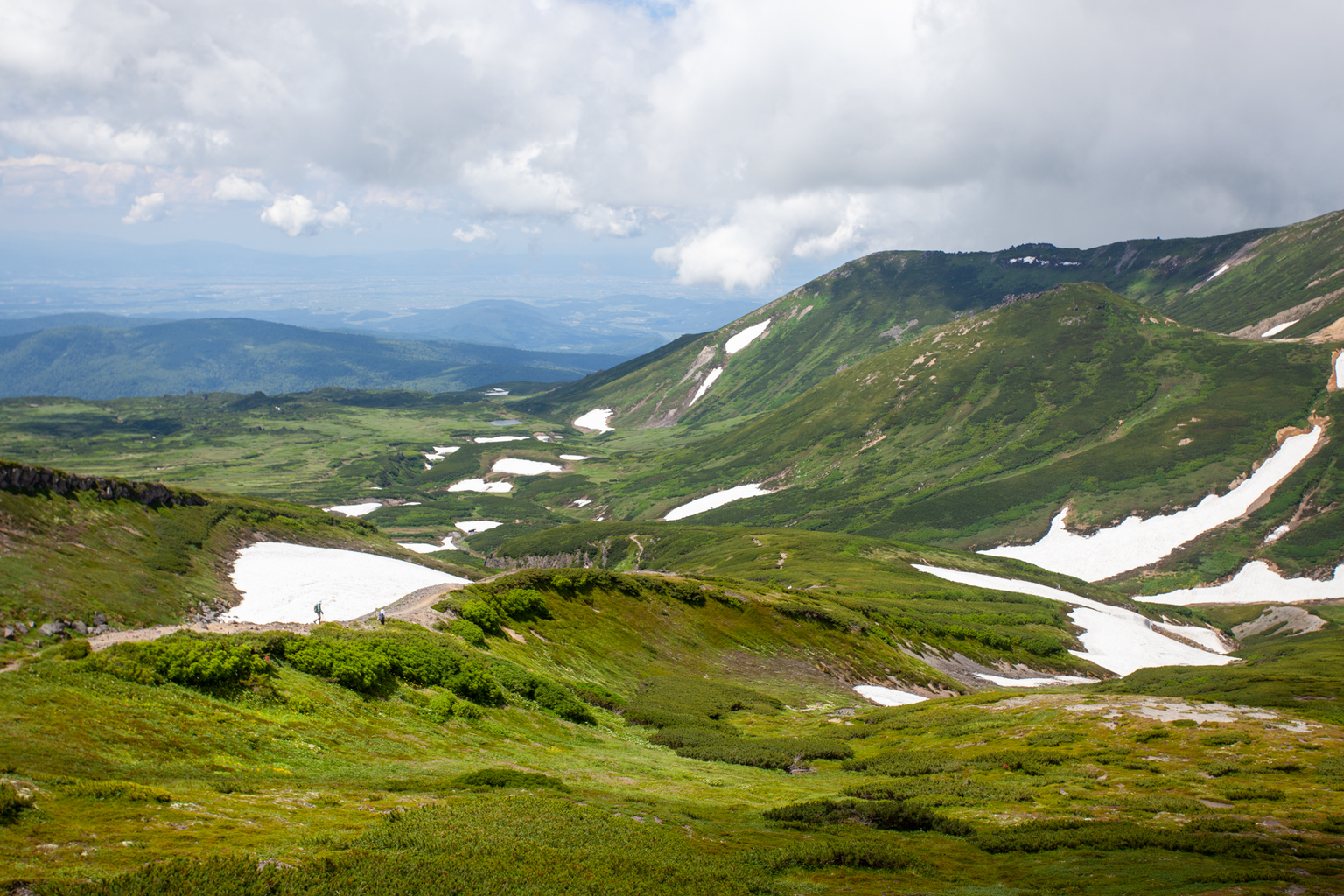
Nakadake Loop
Via Susoaidaira Valley
If you are not looking for a steep climb, there is a gentler way to reach Nakadake Onsen. The Nakadake Loop is a relatively flat trail via Susoaidaira Valley. It will take you to the onsen in around three hours and you can follow the same route back. I enjoyed the scenery along Susoaidaira Valley so much that I changed my travel plans just to be able to see the valley for a second time.
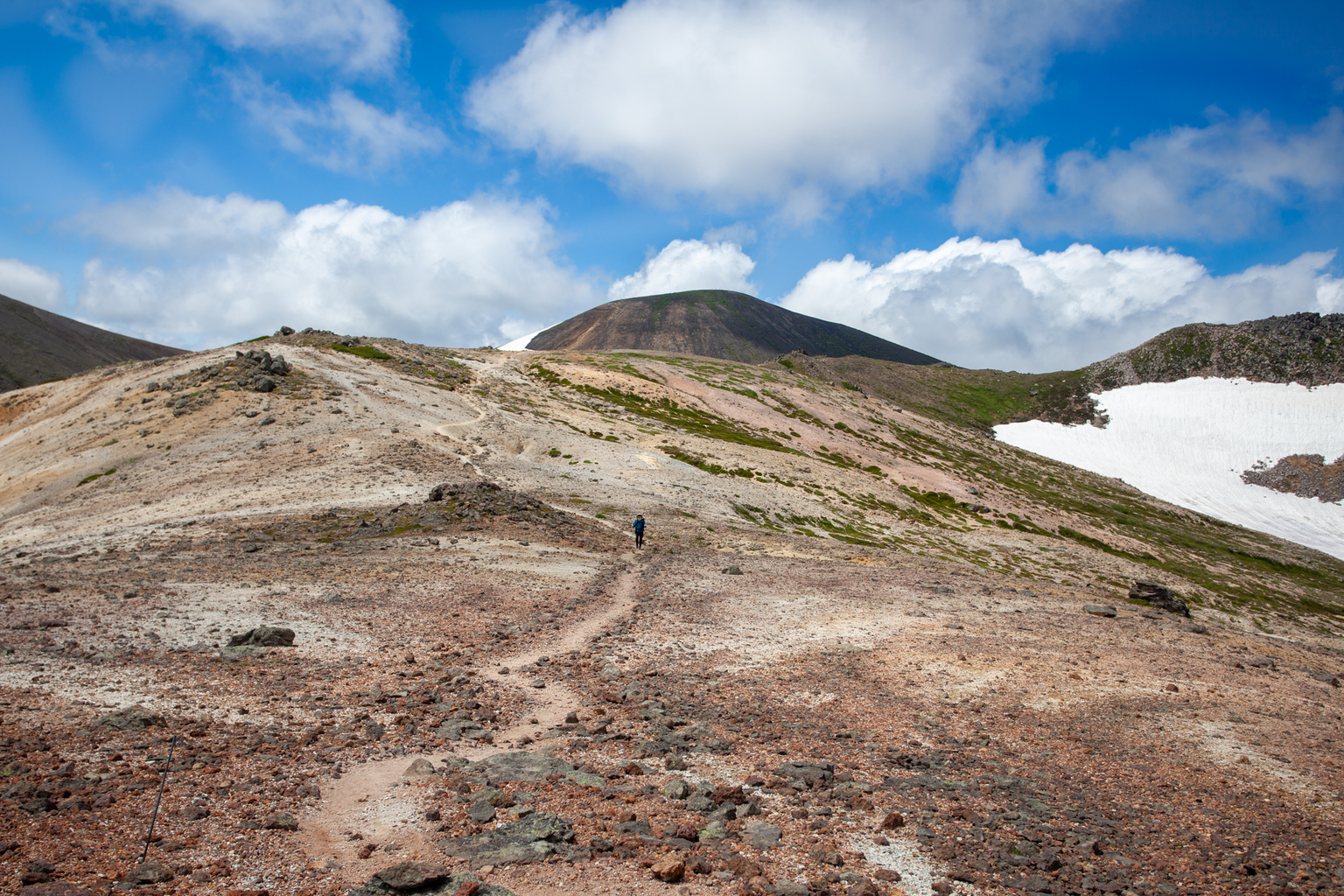
Nakadake Loop hike
Via Asahidake
If you chose the more challenging Asahidake option, the loop trail starts right outside Sugatami Ropeway Station. It includes the same route to Sugatami Pond before taking a detour to the steep trail going all the way up to Asahidake. You will be walking on loose volcanic terrain all the way up to the peak. Good hiking shoes and poles are highly recommended. Once you reach the peak of Asahidake, the weather tends to be volatile even on sunny days. Try to spend some time up there, until you get a weather window clear of clouds to enjoy the scenery.
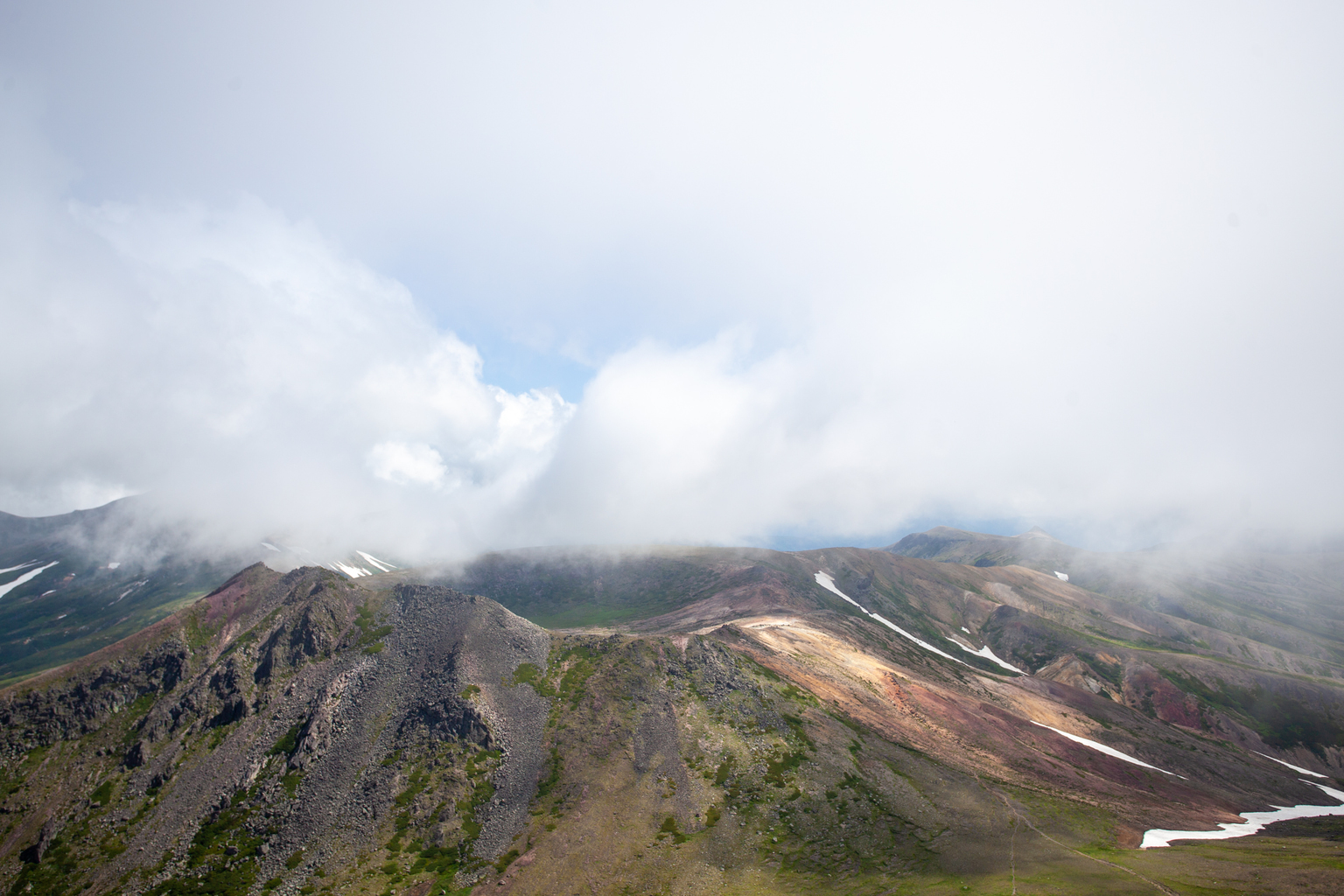
View from the top of Asahidake
This is one of the best sceneries along the trail to make you feel in awe of the grandeur of the largest national park in Japan. Although this accessible trail is often shared by hikers ranging from age six to nearly age 85, one is strongly advised to skip it altogether on rainy, windy and low visibility days due to slippery terrain.
Once you leave Asahidake, the road steeply leads down to Ura-Asahi campsite. The descent is very short but steep. Hiking poles will again come in handy especially at the tail end of the ascent where you will have to cross a snow patch even during the summer. Once you reach the camping site you are mostly done with the more strenuous ascents and descents of this loop hike. But luckily some of the best scenery along the trail will still be ahead of you.
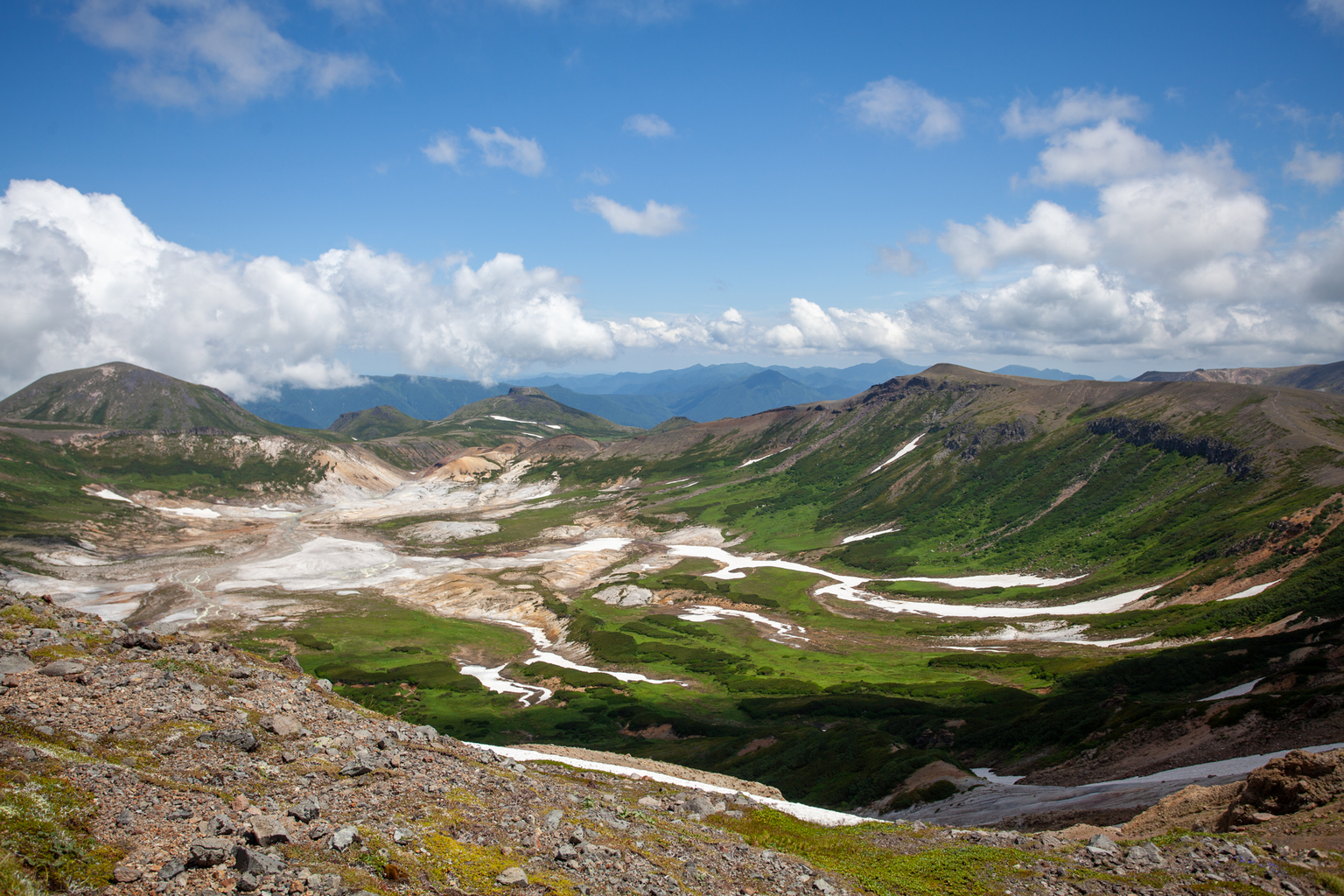
Ohachi-Daira
Ohachi-Daira Valley with its “poisonous onsen” is one of the landmarks along the trail. Soon after Ohachi-Daira Valley, you will reach Nakadake Onsen where you will likely encounter many fellow hikers taking a lunch break while dipping their feet in the onsen water.
The way back to the trailhead follows Susoaidaira Valley (the easier second option introduced above). This trail offers the gentlest and most picture-perfect scenery along the route, mostly served by wooden walking platforms. The valley is heaven for flower enthusiasts and photographers, especially during summer and autumn. The flowers, the colors and the unintimidating beauty of the valley will even make you briefly forget that you are walking in bear territory.
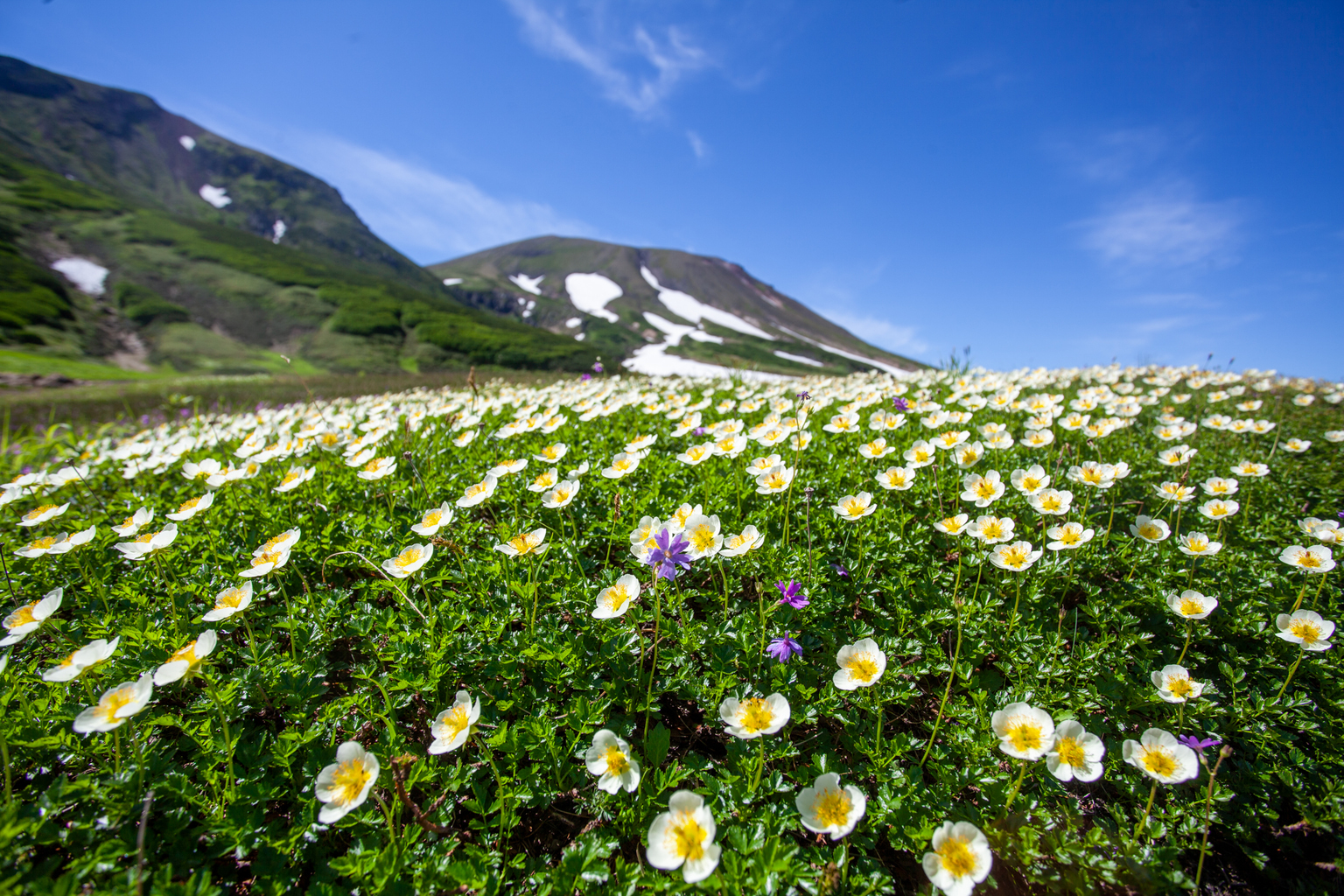
Susoaidaira alpine flowers
3. Kurodake Day Traverse
The popular day traverse to Kurodake connects the onsen towns of Asahidake and Sounkyo. It’s a great trail option for those wanting to get a taste of thorough hiking for a day without having to spend the night in a campsite or mountain lodge.
There are several ways to approach this popular traverse. Like the Nakadake hike, you can either go through Asahidake or take the Susoaidaira Valley. Both routes will take you to Kurodake in seven to eight hours. I found this hike to be a great option to get a taste of the more remote and less populated landscapes that the multi-day hikers walking Daisetsuzan’s Grand Traverse get to experience.
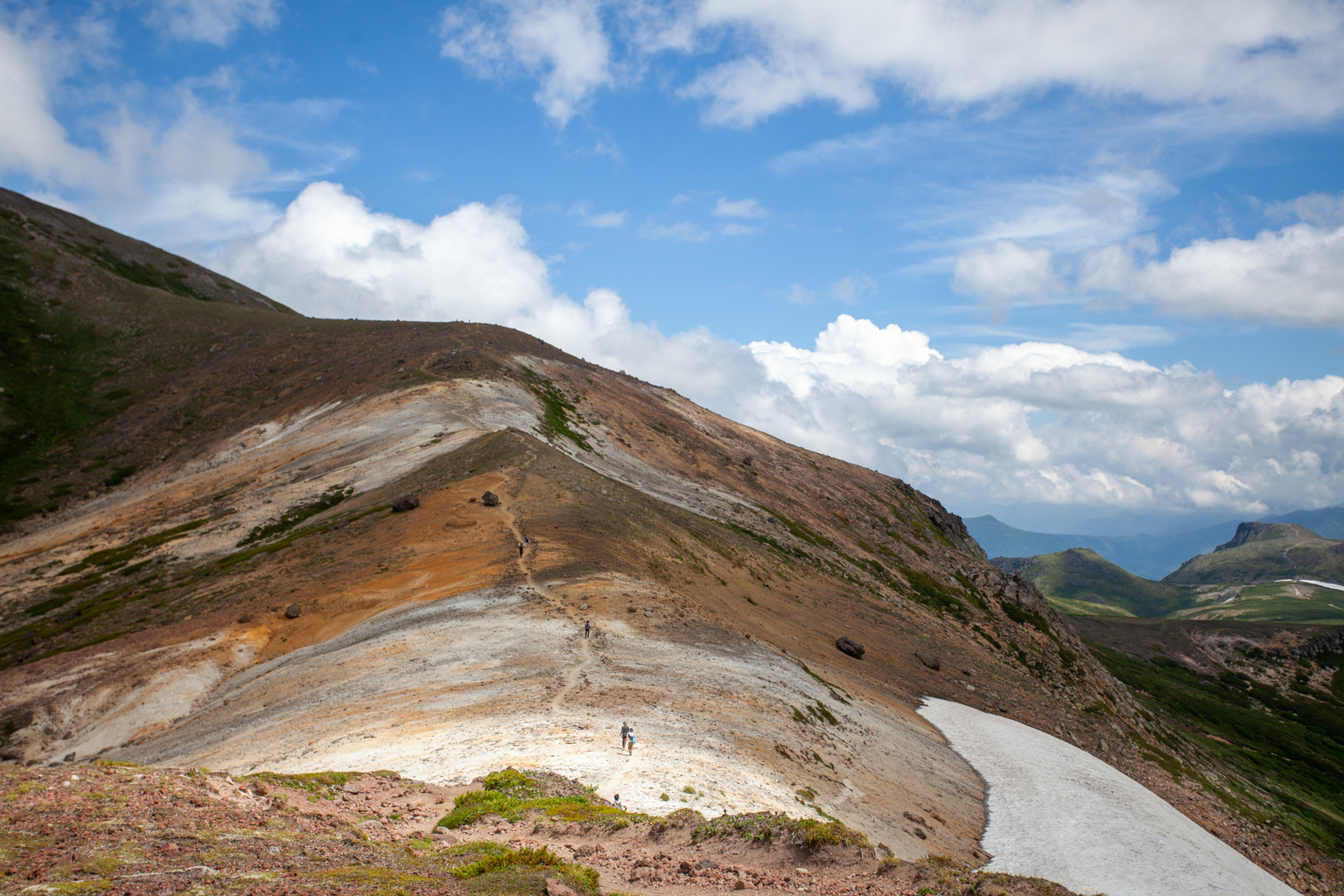
Kurodake
This hike is an especially good option if you plan to divide your time between Asahidake Onsen and Sounkyo Onsen towns like I did. You will need seven to eight hours (with a long layover in Asahikawa City) to travel between these two towns with public transportation. Alternatively, you can forward your luggage between the two towns by TA-Q-BIN transport. And then, traverse the mountains on foot in the same amount of time. That way, you experience some of the most untouched landscapes that Japan has to offer.
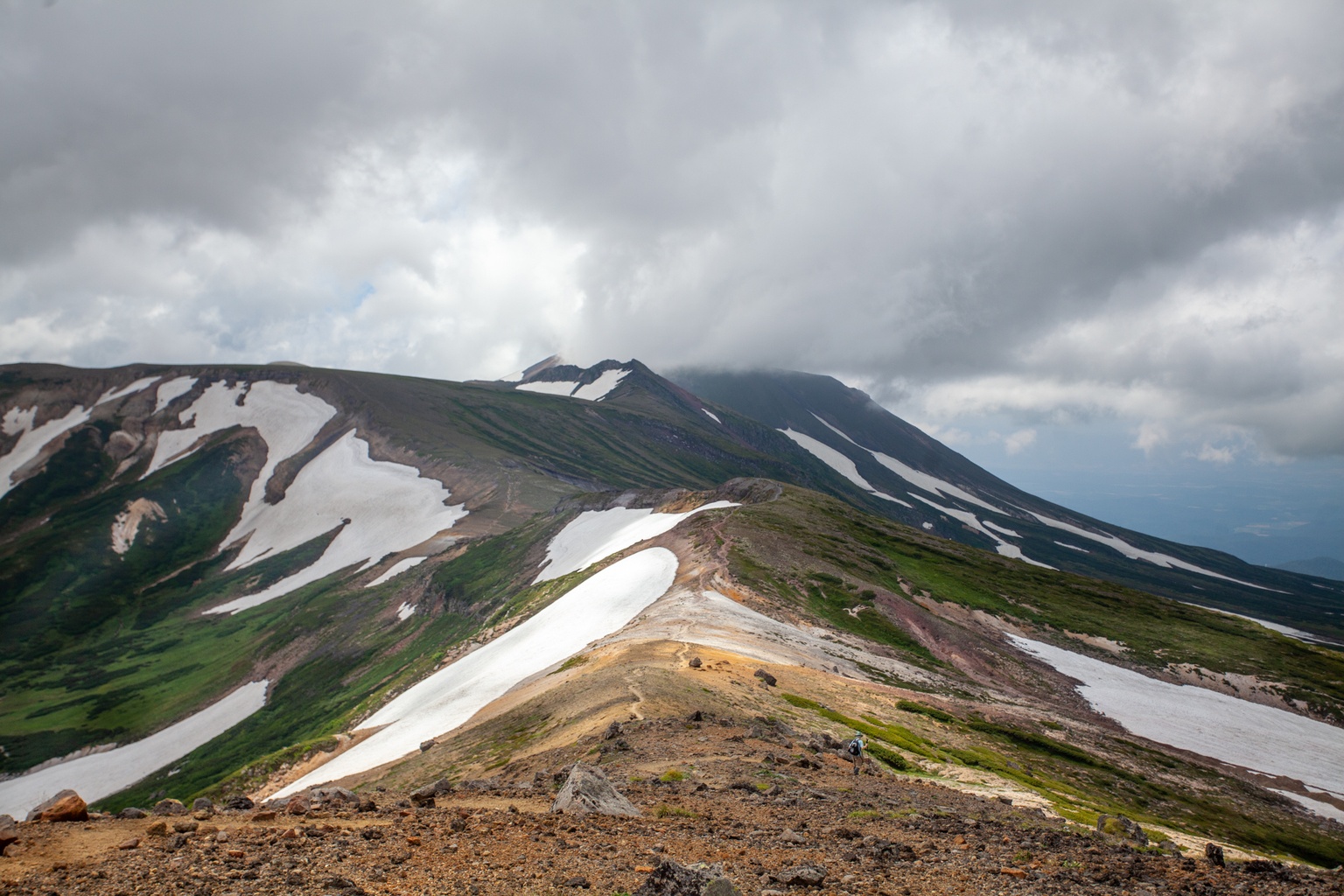
Kurodake
Things to Take into Consideration
The day hikes option, along with the promise of epic scenery, is what attracted me to Daisetsuzan the most. As a solo hiker, I did not feel very enthusiastic about solo camping at night in bear territory. And the opportunity to hike with a lighter day pack is always hard to pass up.
Although Daisetsuzan was not crowded this summer, you can still expect to run into many other solo hikers on the trail. Many will be more than happy to team up with other solo hikers. Bear bells are common, but the trail friendships always feel like an even better option. You can quickly form bonds with total strangers who are all looking out for each other. That’s what makes these solo hikes in Japan so memorable for me. My days in Daisetsuzan were no exception.
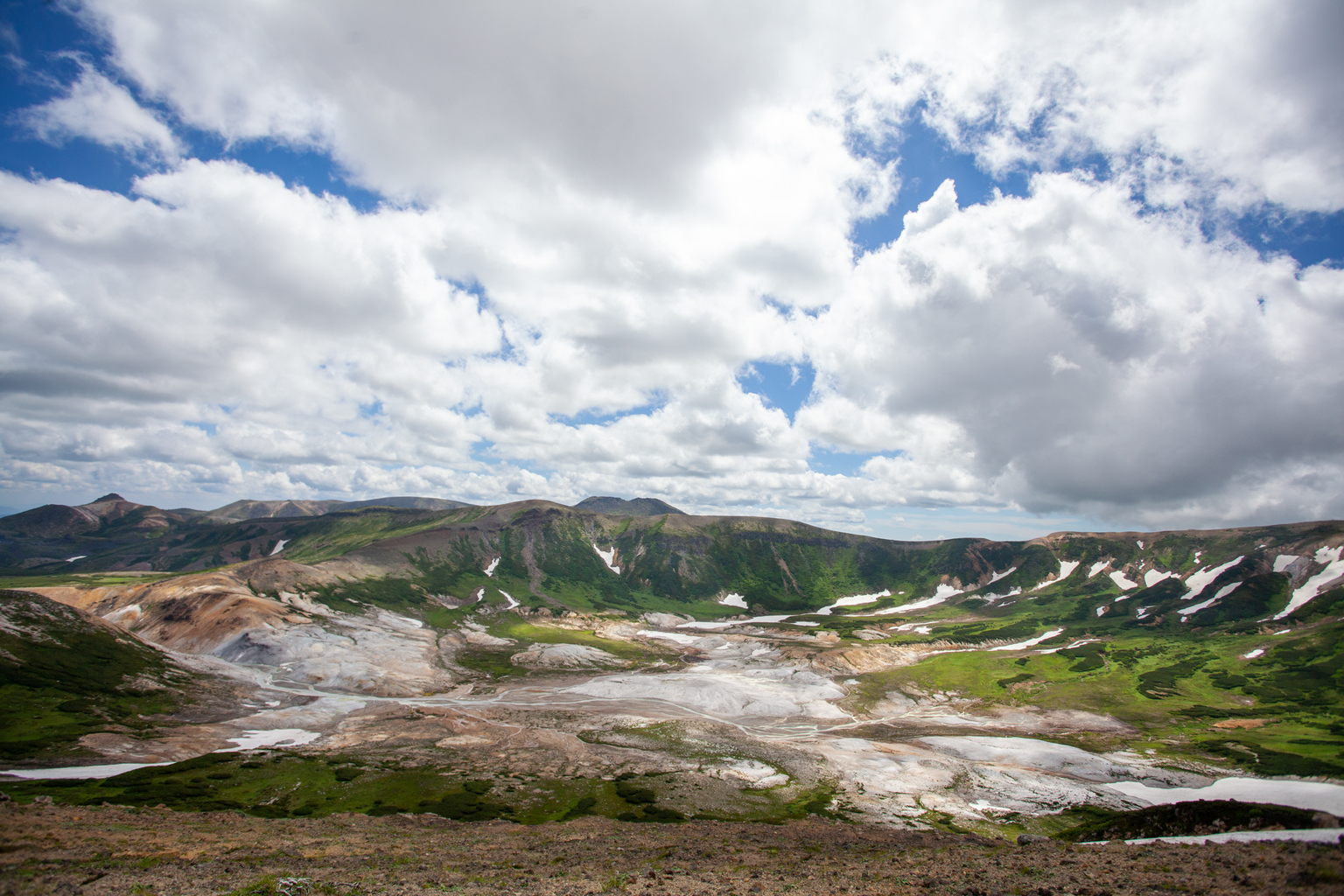
All photos by Burcu Basar
Looking for more travel inspiration? TW has you covered, from Hokkaido to Okinawa.

